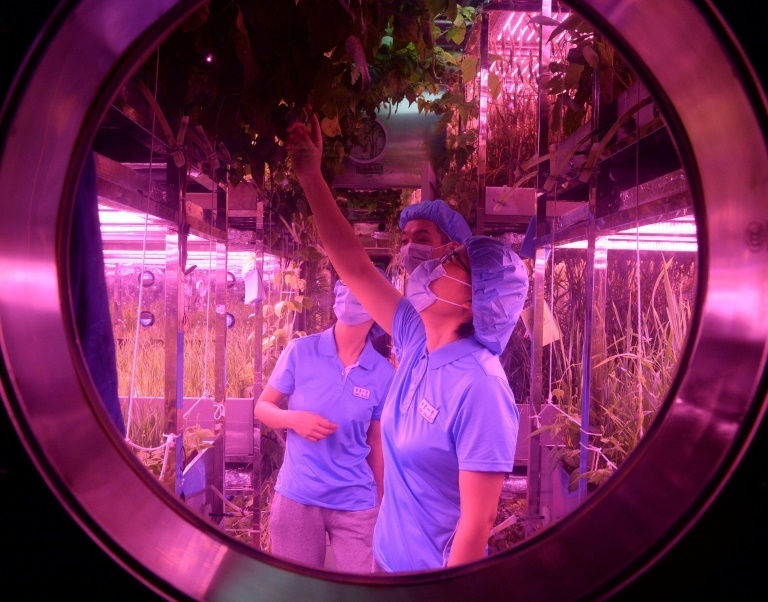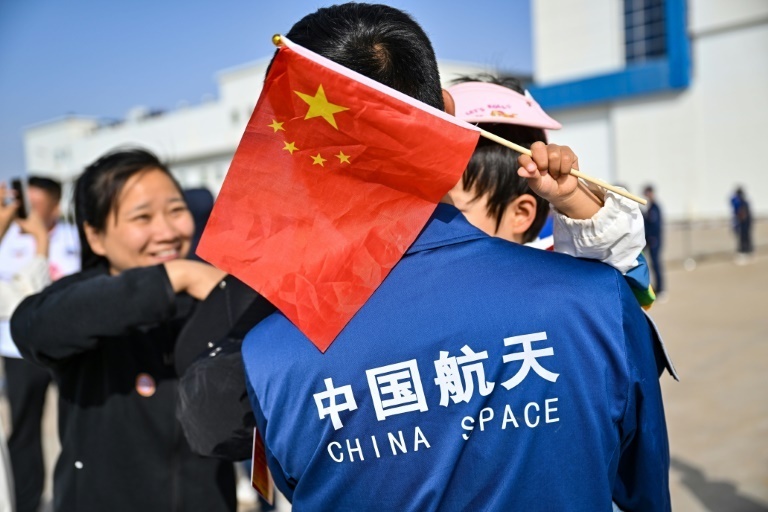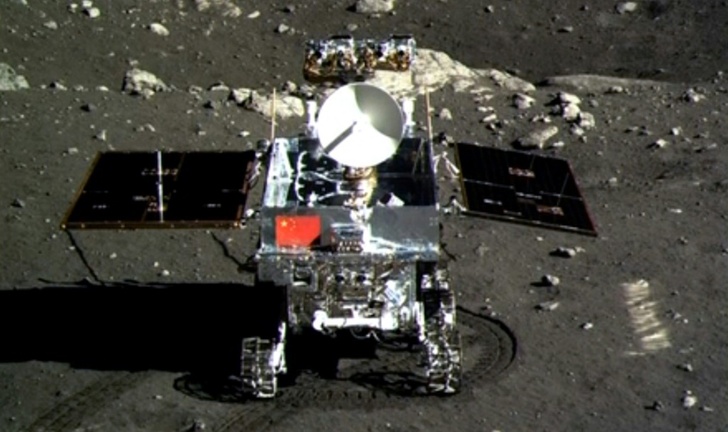China successfully launched the latest mission to its Tiangong space station on Tuesday, with a crew that includes its first civilian astronaut.
It marked the latest space milestone for China, as it looks to catch up with the United States and Russia.
Here is a look at the Chinese space programme, and where it is headed:
- Mao's vow -
Soon after the Soviet Union launched Sputnik in 1957, Chinese leader Mao Zedong pronounced: "We too will make satellites."
It took more than a decade, but in 1970, China launched its first satellite on a Long March rocket.
Human spaceflight took decades longer, with Yang Liwei becoming the first Chinese "taikonaut" in 2003.
As the launch approached, concerns over the viability of the mission caused Beijing to cancel a live television broadcast at the last minute.
But it went smoothly, with Yang orbiting the Earth 14 times during a 21-hour flight.
- Space station and 'Jade Rabbit' -
Following in the footsteps of the United States and Russia, China started planning for a space station of its own in Earth orbit.

In 2013, the second Chinese woman in space, Wang Yaping, gave a video class from that craft to children across the country.
Tiangong-1 was also used for medical experiments and, most importantly, tests intended to prepare for the construction of a space station.
That was followed by the "Jade Rabbit" lunar rover in 2013, which initially appeared to be a dud when it turned dormant and stopped sending signals back to Earth.
It made a dramatic recovery, however, ultimately surveying the Moon's surface for 31 months -- well beyond its expected lifespan.
In 2016, China launched its second orbital lab, the Tiangong-2. Astronauts who visited the station have run experiments on growing rice and other plants in space.
- 'Space dream' -
Under President Xi Jinping, plans for China's "space dream" have been put into overdrive.

Besides a space station, China is planning to build a base on the Moon, reiterating this week its goal to land humans on the Moon by 2030.
The lunar plans were dealt a setback in 2017 when the powerful Long March-5 Y2 rocket failed to launch on a mission to put communication satellites into orbit.
That forced the postponement of the Chang'e-5 launch, originally scheduled to collect Moon samples in the second half of 2017.
Another robot, the Chang'e-4, landed on the far side of the Moon in January 2019 -- a historic first.
Chang'e-5 eventually landed on the Moon in 2020, raising a Chinese flag on the lunar surface and returning to Earth the first lunar samples in four decades.
And in 2021, its Tianwen-1 mission successfully landed a rover on the surface of Mars.
- Palace in the sky -
The final module of space station Tiangong -- which means "heavenly palace" -- successfully docked with the core structure last year.
It carries several pieces of cutting-edge science equipment, state news agency Xinhua reported, including "the world's first space-based cold atomic clock system".
Tiangong is expected to remain in low Earth orbit at an altitude between 400 and 450 kilometres (250 and 280 miles) for at least 10 years -- realising China's ambition to maintain a long-term human presence in space.
It will be constantly crewed by rotating teams of three astronauts, who will conduct scientific experiments and help test new technologies.
After Tuesday's launch, the next mission to Tiangong, the Shenzhou-17, is expected in October.
bur-tjx-oho/dhw/qan
© Agence France-Presse
Your content is great. However, if any of the content contained herein violates any rights of yours, including those of copyright, please contact us immediately by e-mail at media[@]kissrpr.com.
Source: Story.KISSPR.com

